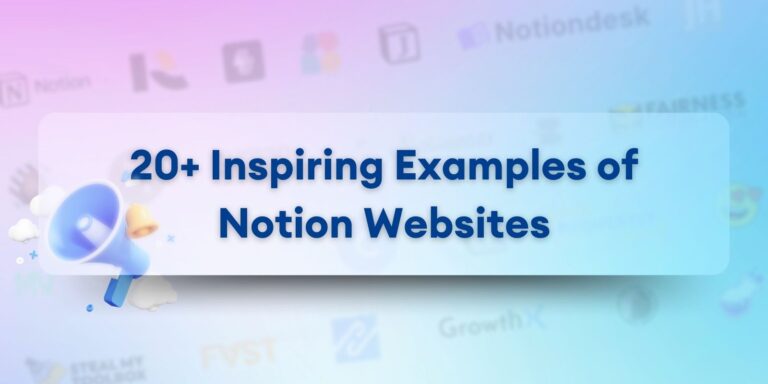Google Ads is an online advertising platform developed by Google, which enables businesses to display ads on Google’s search engine results page and other Google properties. In today’s digital age, online advertising has become crucial for businesses to reach their target audience effectively.
One of the most popular and effective online advertising platforms is Google Ads. With Google Ads, businesses can create ads, set a budget, and target specific keywords and demographics to ensure that their ads are seen by the right audience.
As a trainer at NVIT of different Digital Marketing platforms, I know from my experience that Google ADs can help any businesses drive more traffic to their websites, increase brand awareness, and ultimately, generate more conversions and sales.
Whether you’re a small business owner or a seasoned marketer, understanding Google Ads can be a game-changer for your online advertising efforts.
How Google Ads Works
Google Ads is a powerful online advertising platform that allows businesses to reach their target audience and drive valuable traffic to their websites. Understanding how Google Ads works is essential for advertisers looking to leverage its potential to the fullest.
In this section, we will explore the key components that make up the Google Ads ecosystem and how they interact to deliver impactful advertising campaigns.
Auction-based Advertising System
At the heart of Google Ads lies an auction-based advertising system. When a user enters a search query relevant to an advertiser’s keywords, an auction is triggered. The auction considers various factors, including the advertiser’s bid, relevance of the ad, and the overall quality of the landing page experience.
Google Ads uses a pay-per-click (PPC) model, meaning advertisers only pay when a user clicks on their ad. The highest bidder does not necessarily win the auction; Google takes into account other factors to determine the winner.
Ad Rank And Quality Score
To determine the position of an ad in the search results, Google uses a metric called Ad Rank. Ad Rank is calculated based on an advertiser’s bid, the ad’s relevance, and the expected impact of ad extensions and other ad formats. The higher the Ad Rank, the better the position of the ad.
Quality Score plays a vital role in determining Ad Rank. Quality Score is Google’s evaluation of the overall quality and relevance of an ad, its landing page, and the user experience it provides. It is essential for advertisers to optimize their ads and landing pages to achieve a high Quality Score, as it can positively impact ad visibility and cost-per-click.
Targeting Options For Advertisers
Google Ads provides advertisers with a wide range of targeting options to ensure their ads reach the right audience. Advertisers can target their ads based on keywords related to their products or services, geographic locations, language preferences, and device types.
Furthermore, advertisers can refine their targeting by utilizing demographic data such as age, gender, and household income. Google Ads also offers advanced targeting options like remarketing, which allows advertisers to show ads to users who have previously visited their website.
By leveraging these targeting options, advertisers can ensure their ads are displayed to the most relevant audience, increasing the likelihood of generating conversions and maximizing their return on investment.
Recently I ran a Google ad for my business Reclassy.com, where I ran ads on the article “Best Thermal Jeans”, I targeted people who are aged between 18 and 50, and showed ads to both Men and Women looking for thermal jeans and places fixed as New York.
Key Components Of Google Ads Campaigns
When it comes to running successful advertising campaigns on Google, understanding the key components of Google Ads is essential. These components play a crucial role in maximizing the effectiveness of your campaigns and reaching your target audience effectively.
Campaign Creation And Structure
Creating a well-structured Google Ads campaign is the foundation for achieving your advertising goals. In the campaign creation process, you need to carefully consider your goals, target audience, and budget. This involves defining your campaign settings, such as location targeting, language preferences, and ad scheduling.
Furthermore, structuring your campaign into organized ad groups allows you to create targeted ads that align with specific keywords or themes. By grouping related keywords together, you can ensure your ads are relevant and improve your chances of reaching potential customers.
Ad Formats And Extensions
Google Ads offers a variety of ad formats and extensions that allow you to showcase your products and services in the most engaging way possible. These formats include text ads, responsive search ads, image ads, video ads, and more.
Additionally, ad extensions provide additional information or features to your ads, making them more prominent and compelling. Examples of ad extensions include site link extensions, call extensions, location extensions, and callout extensions. By implementing these extensions, you can enhance the visibility of your ads and increase click-through rates.
Keyword Selection And Match Types
Selecting the right keywords is crucial for the success of your Google Ads campaign. Conduct thorough keyword research and identify keywords that are relevant to your products or services and have a high search volume.
When incorporating keywords into your campaign, it is important to understand match types. Match types determine how closely a user’s search query must match your selected keywords in order to trigger your ads. The different match types include broad match, “phrase match”, [exact match], and broad match modifier.
Ad Targeting And Remarketing Strategies
Targeting the right audience is key to achieving your advertising goals effectively. Google Ads allows you to target your ads based on various factors such as demographics, interests, and previous interactions with your website. This ensures that your ads are shown to users who are more likely to be interested in your products or services.
Furthermore, remarketing strategies can be implemented to re-engage users who have previously interacted with your website. By using cookies, you can display personalized ads to these users and remind them of your brand, increasing the chances of conversion.
Best Practices For Google Ads Campaigns
When it comes to running successful Google Ads campaigns, there are several best practices that can help you achieve optimal results. From crafting compelling ad copy to optimizing your landing pages, every aspect of your campaign plays a crucial role in driving clicks, conversions, and ultimately, business growth.
Ad Copywriting Tips And Tricks
Writing persuasive and engaging ad copy is essential for capturing your target audience’s attention and encouraging them to click on your ads. Here are some tips and tricks to keep in mind:
- Focus on your unique selling proposition (USP) and highlight what sets your offering apart from your competitors.
- Use attention-grabbing headlines that clearly communicate the benefits or solutions your ads offer.
- Incorporate relevant keywords into your ad copy to improve relevancy and boost your ad’s visibility.
- Keep your ad copy concise and to the point, highlighting the most compelling aspects of your product or service.
- Include a clear call-to-action (CTA) that prompts users to take the desired action, such as “Shop Now,” “Learn More,” or “Book Appointment.”
Landing Page Optimization Techniques
An effective landing page is crucial for converting website visitors into customers or leads. Here are some optimization techniques to help you create high-performing landing pages:
- Ensure your landing page aligns with the ad that users clicked on, providing a seamless and relevant user experience.
- Create a clear and visually appealing layout that guides users towards the desired action.
- Optimize your landing page loading speed to avoid high bounce rates. Use compressed images and minify CSS and JavaScript files to improve performance.
- Include persuasive and benefit-driven copy that highlights the value your product or service offers.
- Add trust signals, such as customer reviews, testimonials, and security badges, to instill confidence in your visitors.
Budgeting And Bidding Strategies
Proper budgeting and bidding strategies are vital for maximizing the effectiveness of your Google Ads campaigns. Here are some strategies to consider:
- Set a daily budget that aligns with your advertising goals and expected return on investment (ROI).
- Monitor your campaign performance regularly and adjust your bidding strategy to achieve the desired ad placements and CPC (cost-per-click).
- Consider using automated bidding strategies, such as target CPA (cost-per-acquisition) or target ROAS (return on ad spend), to optimize your campaign performance.
- Focus your budget on high-performing keywords and ad placements to maximize your ad spend.
- Regularly review and refine your campaign settings to ensure your budget is allocated efficiently and effectively.
Monitoring And Optimizing Campaign Performance
An ongoing process of monitoring and optimizing your Google Ads campaign is essential to ensure its success. Here are some tips for effectively managing and improving your campaign performance:
- Regularly review your campaign metrics, such as click-through rate (CTR), conversion rate, and ROI, to identify areas for improvement.
- Utilize Google Ads’ performance reports to gain insights into the performance of your keywords, ads, and bidding strategies.
- Test different ad variations, landing page elements, and target audiences to discover what resonates best with your target audience.
- Make data-driven decisions by using A/B testing and analyzing the results to optimize your campaign’s performance.
- Continuously refine your targeting options to ensure your ads reach the most relevant audience.
Advanced Google Ads Strategies
Google Ads is a powerful platform that allows businesses to reach their target audience and drive conversions. While basic Google Ads strategies can help you get started, there are advanced tactics that can take your campaigns to the next level. In this post, we’ll explore some advanced Google Ads strategies that can supercharge your advertising efforts.
Utilizing Ad Scheduling And Geo-targeting
Ad scheduling and geo-targeting are two advanced features in Google Ads that allow you to optimize your ad campaigns based on when and where your audience is most active. Ad scheduling enables you to choose specific days and times to run your ads, ensuring that they are displayed when your target audience is most likely to engage with them. Geo-targeting, on the other hand, allows you to target your ads to specific locations, such as cities or countries, ensuring that your promotions are seen by the right people in the right places. By utilizing these advanced features, you can maximize the impact of your ads and increase your chances of conversion.
Display Advertising With Google Ads
Display advertising is a powerful way to showcase your brand and product offerings to a wide audience. With Google Ads, you can create visually appealing display ads that can be shown on websites, mobile apps, and even YouTube videos. These ads can be in the form of banners, images, or rich media, and can be targeted to specific demographics, interests, and behaviors. By leveraging the display advertising capabilities of Google Ads, you can increase brand visibility, expand your reach, and attract more potential customers.
Video Advertising On Youtube
Video advertising on YouTube is another advanced strategy that can yield great results. With YouTube, you have the opportunity to reach billions of viewers worldwide and engage them through compelling video content. You can create TrueView ads, which allow users to skip the ad after a few seconds, or bumper ads, which are short and non-skippable. By targeting your video ads to relevant keywords, interests, or demographics, you can ensure that your content is seen by the right audience at the right time. Video advertising on YouTube enables you to tell your brand story in a visually captivating way and drive engagement and conversions.
Mobile Advertising And App Promotion
In today’s mobile-dominated world, it’s essential to optimize your Google Ads campaigns for mobile devices. Mobile advertising allows you to reach users who are on the go and connect with them in a more personalized and immediate way. With Google Ads, you can create mobile-specific ads that are specifically tailored to the mobile experience, such as mobile app install ads or call-only ads. Additionally, Google Ads offers app promotion campaigns, where you can promote your mobile app directly in Google Search, Google Play Store, YouTube, and Google Display Network. By leveraging mobile advertising and app promotion, you can effectively target mobile users and drive app installs, in-app purchases, and other valuable actions.
Maximizing Returns With Google Ads
Google Ads is a powerful online advertising platform that can help businesses reach their target audience and drive meaningful results. However, simply running a Google Ads campaign is not enough to maximize returns. To truly make the most out of your investment, you need to implement strategies that will optimize your campaigns, track and analyze results, and continuously improve your return on investment (ROI). In this article, we will explore three key aspects of maximizing returns with Google Ads: tracking and analyzing campaign results, conversion tracking and optimization, and A/B testing and experimentation.
Tracking And Analyzing Campaign Results
Tracking and analyzing campaign results is crucial to understanding the impact of your Google Ads efforts. By monitoring key metrics, you can gain valuable insights into your campaign performance and make data-driven decisions to improve efficiency and effectiveness. Some important metrics to track include:
- Click-through rate (CTR)
- Conversion rate
- Cost per conversion
- Return on ad spend (ROAS)
Regularly analyzing these metrics will allow you to identify areas for improvement and make data-driven optimizations to your campaigns. Through the Google Ads platform, you can access detailed reports and performance data, enabling you to make informed decisions to improve your campaign results.
Conversion Tracking And Optimization
Conversion tracking is a critical component of maximizing returns with Google Ads. By setting up conversion tracking, you can measure the actions that users take on your website after interacting with your ads. This could include making a purchase, filling out a contact form, or subscribing to a newsletter.
With conversion tracking in place, you can identify which keywords, ads, and campaigns are driving the most valuable actions and allocate your budget accordingly. By optimizing your campaigns for conversions, you can ensure that your ad spend is focused on driving real results for your business.
A/b Testing And Experimentation
A/B testing and experimentation are key strategies to improve the performance of your Google Ads campaigns. By testing different elements such as ad copy, landing page design, and targeting options, you can identify what works best for your target audience.
When conducting A/B tests, it is important to change only one element at a time to accurately measure the impact of the variation. This could include testing different headlines, calls to action, or even different ad formats. By experimenting and iterating on your campaigns, you can continuously improve your results and maximize returns.
Remember, optimizing your Google Ads campaigns is an ongoing process. By tracking and analyzing campaign results, implementing conversion tracking and optimization, and conducting A/B tests and experiments, you can scale successful campaigns and improve ROI. With these strategies in place, you can make the most out of your investment in Google Ads and drive meaningful results for your business.

Credit: adespresso.com
Frequently Asked Questions For All You Need To Know About Google Ads
What Are The Basics Of Google Ads?
Google Ads is an online advertising platform where businesses can create and manage ads to reach their target audience. It offers various ad formats and targeting options for effective marketing. With Google Ads, businesses can set budgets, choose keywords, and track performance to optimize their campaigns.
What Is The Most Important Thing With Google Ads?
The most important thing with Google Ads is optimizing your campaigns for maximum performance. Focus on targeting the right audience, selecting relevant keywords, creating compelling ad copy, and continuously monitoring and adjusting your campaigns based on data and analytics.
Is Google Ads Easy To Learn?
Yes, Google Ads is easy to learn. It offers a user-friendly interface, step-by-step tutorials, and a wealth of online resources. By following the guides provided and experimenting with campaigns, you can quickly grasp the basics and start running successful ads for your business.
Why Did Google Ads Charge Me $50?
Google Ads charged you $50 because it is the amount you spent on advertising campaigns.
Conclusion
To wrap up, Google Ads is a powerful tool that can significantly boost your online presence and drive targeted traffic to your website. With its wide range of targeting options, ad formats, and performance tracking capabilities, it offers businesses an effective way to reach their target audience and achieve their marketing goals.
By following best practices and continuously optimizing your campaigns, you can maximize the results and generate a higher return on investment. Incorporate Google Ads into your marketing strategy and watch your business thrive in the digital world.






